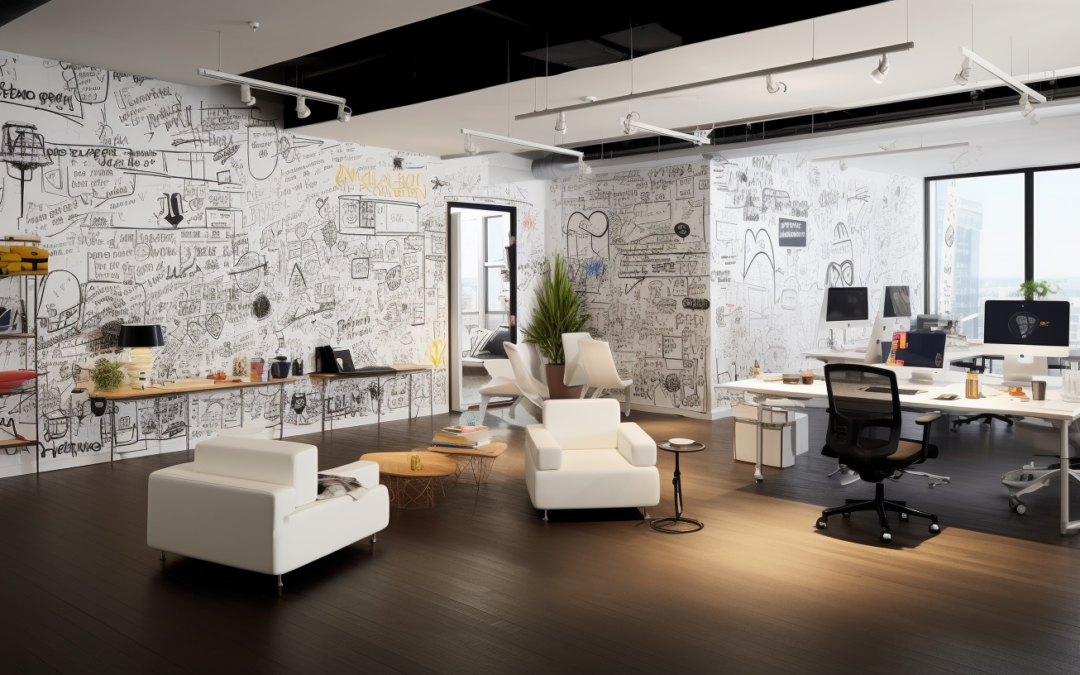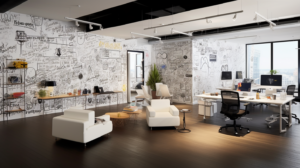Commercial Dry Erase Painted Walls Transforming Production Lines
In an era where speed plays a critical role in production, commercial dry erase painted walls have become essential to the manufacturing process. From assembling intricate technology components to crafting complex automotive parts, these walls foster increased efficiency and quality control, empowering manufacturers with innovative solutions that optimize their workflow and enhance product quality. Far from being merely a canvas for creative thought, they are revolutionizing the industry by enabling faster communication and spearheading improved productivity on the factory floor.
Maximizing Workflow Efficiency
Efficiency is the lifeblood of any manufacturing operation. Time wasted is money lost, and in an environment where precision and timeliness are key, manufacturers are turning to commercial dry erase walls to help maximize workflow efficiency. These walls are strategically placed within production facilities, providing real-time visual aids for workers and supervisors alike.
Imagine a scenario on the factory floor where complex assembly instructions must be communicated to a team of technicians. Traditionally, this would involve printed manuals or digital displays that might not always be easily accessible or current. With strategically positioned commercial dry erase walls, these instructions can be readily sketched, diagrammed, or annotated, ensuring that all team members are on the same page.
What sets these walls apart is their adaptability. Unlike fixed signage or printed materials, information on dry erase surfaces can be updated on the fly. If there’s a sudden change in the assembly process or a new quality control measure to implement, it can be instantly communicated on the wall. This will, in turn, eliminate the lag time associated with revising and redistributing printed materials. This level of agility is a game-changer in an industry where adaptation and responsiveness are key to staying competitive.
Real-time Production Tracking
For manufacturers, tracking the progress of products along the assembly line is crucial for maintaining quality control and meeting production targets. Commercial dry erase painted walls are stepping up to the plate as dynamic tools for real-time production tracking.
Supervisors are granted a comprehensive insight into their products’ progress on the production floor with interactive visual charts and flow diagrams. These surfaces offer a bird’s eye view of each item’s position in the assembly cycle, making it easy to detect any potential obstacles or delays and intervene in real-time. This offers a seamless, stress-free way to ensure an efficient production process.
Moreover, these walls can serve as visual cues for workers, helping them stay on track and adhere to standardized operating procedures. Employees are less likely to make mistakes when they have a clear, visual guide. Moreover, deviations from the established process are quickly identified and corrected.
Consider a scenario in a car manufacturing plant where the engine assembly process is highly complex. Instead of relying solely on manuals or digital displays, the production line can have a dedicated commercial dry erase painted wall where the entire engine assembly process is meticulously laid out. Workers can follow the visual guide step by step, reducing the margin for error and ensuring that every engine meets the strict quality standards the manufacturer sets.
Enhancing Quality Control
Quality control is a cornerstone of manufacturing. Maintaining consistent product quality is a matter of reputation and regulatory compliance. Commercial dry erase walls are pivotal in enhancing quality control procedures.
In the realm of quality control, precision is everything. These walls can be transformed into detailed checklists, inspection criteria charts, and statistical process control (SPC) charts that track machinery performance and output quality. For example, in a food processing facility, SPC charts displayed on dry erase surfaces can track variables like temperature, humidity, and processing time in real-time, ensuring that each batch of products meets safety and quality standards.
Additionally, walls can be used for root cause analysis. In a product defect or quality issue, the entire process leading up to the problem can be visually traced and analyzed on the wall. This aids in identifying the exact point of failure, allowing manufacturers to take corrective actions swiftly and prevent similar issues in the future.
Streamlining Maintenance and Equipment Monitoring
Manufacturing equipment, from CNC machines to conveyor belts, requires regular maintenance and monitoring to operate at peak efficiency. Commercial dry erase painted walls are proving invaluable in streamlining these maintenance processes.
Maintenance schedules, equipment checklists, and performance logs can all be displayed on these walls, serving as a central hub for equipment monitoring and upkeep. Maintenance teams can use the visual guides to track maintenance intervals, update maintenance records, and ensure no machinery is overlooked.
Consider a scenario in a steel manufacturing plant where numerous machines operate round the clock. Each machine has maintenance requirements, and schedules can easily become overwhelming. With a dedicated dry erase wall displaying the maintenance status of every machine, maintenance crews can efficiently plan and execute their tasks, reducing downtime and ensuring that all equipment is properly cared for.
Enhancing Employee Engagement and Empowerment
Beyond their functional utility, commercial dry erase painted walls also positively impact employee engagement and empowerment. In manufacturing, where repetitive tasks are common, introducing interactive and visually stimulating surfaces can boost morale and creativity among workers.
These walls provide opportunities for employees to contribute ideas, suggestions, and improvements directly on the production floor. Workers can have their voices heard on improving processes, making the workplace more ergonomic, or pointing out potential safety hazards—all leading to an empowering and employee-centered atmosphere. Let your team’s ideas come to life and help create a better environment for everyone!
Bringing creativity into the workplace can have far-reaching consequences for problem-solving. Stimulate everyone’s imagination to unlock inspired solutions and maximize the efficiency of day-to-day operations. When workers are encouraged to visualize and draw out solutions on the walls, it promotes a culture of proactive troubleshooting and innovation. In a manufacturing setting, where continuous improvement is a mantra, this creative empowerment can substantially improve efficiency and product quality.
Examples of Success Stories
To illustrate the transformative impact of commercial dry erase painted walls in manufacturing, let’s explore a few real-world success stories:
1. Automotive Assembly Line Efficiency: A leading automotive manufacturer implemented dry erase painted walls along their assembly line. Each station had a dedicated wall displaying the assembly process, part specifications, and quality checklists. As a result, the production cycle time decreased by 15%, and product defects were reduced by 20%.
2. Food Processing Quality Control: A food processing plant adopted dry erase walls for quality control. They used the walls to display SPC charts and checklists for hygiene protocols. This move led to a 30% reduction in quality control inspection time and a 25% decrease in contamination-related incidents.
3. Aerospace Maintenance Hub: An aerospace manufacturing facility introduced maintenance management walls across the plant. Maintenance crews had a centralized location for equipment checklists and maintenance schedules. This led to a 10% decrease in equipment downtime and a 15% increase in equipment lifespan.
4. Electronics Production Collaboration: A high-tech electronics manufacturer installed dry erase walls in their key collaboration zones to improve efficiency. Teams quickly took advantage of the newfound surfaces, using them to visualize project plans, draw design sketches, and brainstorm process improvement concepts—all culminating in a 12% reduction in product development time and a 17% boost in new product introductions. This creative strategy has paid off handsomely!
Conclusion
The manufacturing landscape is rapidly changing, and companies must embrace innovative solutions to stay competitive. Commercial dry erase painted walls have emerged as a solution that transcends their traditional role as creative canvases. In manufacturing environments, these walls have become indispensable tools for optimizing processes, enhancing quality control, and empowering employees. By providing a dynamic and adaptable platform for communication and visualization, they contribute to improved efficiency and product quality and a more engaged and innovative workforce. As manufacturers continue to look for ways to stay ahead of the curve, the role of dry erase walls in shaping future factories is set to expand further, bringing about a new era of productivity and excellence.



Recent Comments